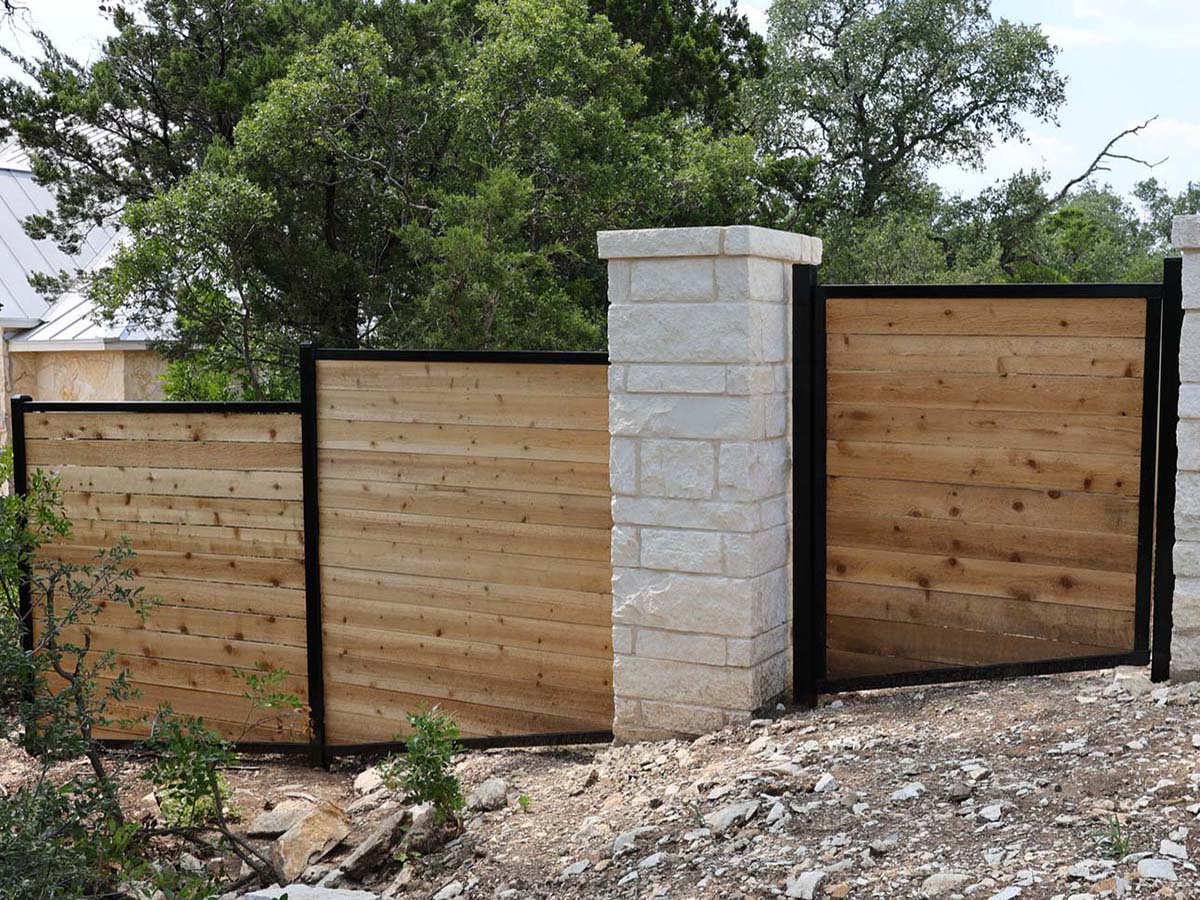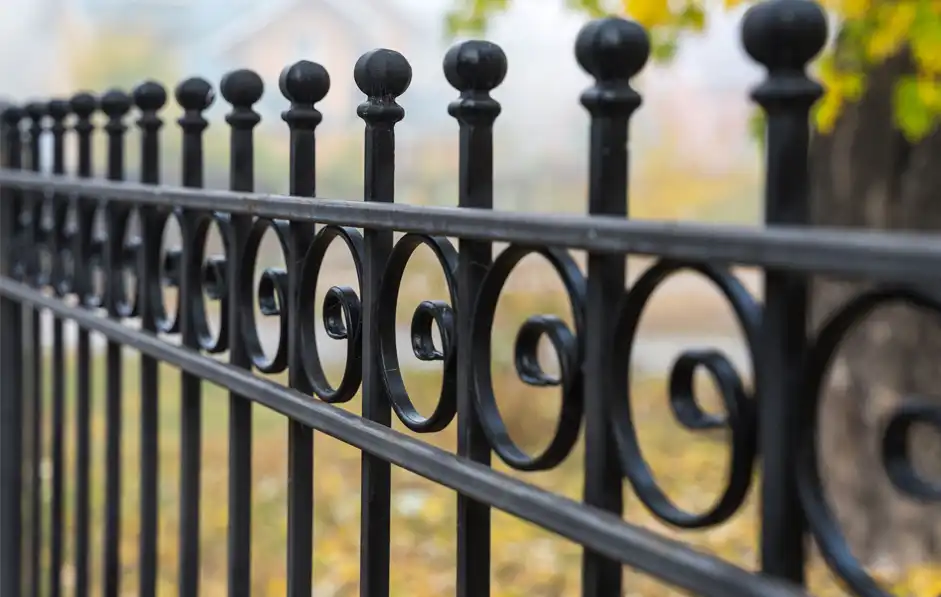All Categories
Featured
Preserving your fencing is necessary to guarantee its appearance, long life, and performance. Various materials have special maintenance requirements, affected by variables such as environment, direct exposure to components, and intended use. Whether your fencing is made from timber, vinyl, metal, or other materials, understanding its care requirements will certainly help maintain it in optimal condition. Below's an introduction of how to preserve different sorts of fencing products properly.
![]()
Cleansing: Utilize a stress washer or soapy water with a soft brush to remove dust, algae, and mold. This need to be done each year or biannually. Securing and discoloring: Use a sealant or discolor every 2-- 3 years to avoid moisture damages and UV fading. Pick a premium product suitable for outdoor usage. Fixings: Replace warped, decayed, or broken boards immediately to avoid further damages. Bug Management: Treat with a wood chemical to safeguard versus termites and various other insects. 2. Plastic Fences. Plastic fences are preferred for their low-maintenance nature however still need some upkeep.
Cleaning: Wash the fence with a mixture of water and moderate cleaning agent utilizing a soft sponge or fabric. Prevent unpleasant cleaners that may scrape the surface. Inspections: Look for gaps or fractures periodically, particularly after storms. Plastic can become weak in incredibly cold climate. Protecting Against Staining: Remove spots quickly. For challenging discolorations, utilize a vinegar service or a vinyl-safe cleaner. 3. Chain-Link Fences. Chain-link fences are functional and durable, typically utilized for protection and border noting.
Corrosion Elimination: Examine for rust regularly, particularly in coastal or moist locations. Get rid of corrosion with a cable brush and use a rust-proof finishing. Cleaning: Wash with water to eliminate dust and debris. Use a scrub brush for areas with heavy build-up. Tightening and Repair Works: Guarantee the messages and web links continue to be tight. Replace damaged areas or hardware as required. 4. Wrought Iron Fencings. Wrought iron supplies a stylish look but needs constant attention to stop rust and keep its finish.
Rust Prevention: Sand off any kind of rust places and apply a rust-resistant guide and paint. This need to be done each year or as required. Cleaning: Use a light soap service and a soft cloth or sponge to eliminate dust. Avoid extreme chemicals that might damage the metal. Paint: Reapply paint every few years to shield the iron and enhance its appearance. 5. Aluminum Fences. Light weight aluminum fences are light-weight, corrosion-resistant, and require minimal treatment.
![]()
Cleaning: Usage soapy water and a fabric to clean up the fencing, washing thoroughly to prevent touches. Assessments: Check for loosened screws or panels regularly. Secure or replace components if required. Touch-Ups: Use paint created for light weight aluminum to cover any type of chips or scratches, shielding the metal beneath. 6. Composite Fences. Composite secure fencing is constructed from recycled products, incorporating the look of timber with greater durability.
Cleaning: Rinse with water and make use of a mild detergent to eliminate dust and discolorations. Stay clear of abrasive devices that might harm the composite surface. Evaluations: Look for indications of warping or fracturing, particularly in areas with extreme temperature level modifications. Mold Avoidance: Clean mold and mildew or mildew promptly with a mix of water and white vinegar. 7. Bamboo Fences. Bamboo fencing is environment-friendly yet more fragile than other products.
Cleansing: Make use of a soft brush with soapy water to tidy dust and particles. Prevent using excessive water pressure to avoid splitting. Securing: Apply a waterproof sealant every 2-- 3 years to protect versus weather condition damage. Repairs: Change cracked or damaged bamboo poles as needed to preserve the framework and appearance. General Upkeep Tips. Trim Plants: Maintain bushes and creeping plants away from the fencing to stop wetness buildup and damages. Seasonal Treatment: In winter, clear snow build-up from fences to prevent anxiety on the framework. In summertime, check for sunlight damages or fading. Routine Examinations: Stroll along the fencing line regularly to look for loose hardware, leaning areas, or other signs of wear. Final thought. Despite the sort of fence material, routine upkeep is the vital to preserving its function and aesthetics. Wooden fences demand one of the most upkeep, while vinyl and aluminum require less initiative however still advantage from periodic cleaning and assessments. By addressing small concerns early and carrying out regular care, you'll enjoy a fence that remains appealing and durable for many years ahead.

- Wood Fences. Wooden fences are timeless yet need normal care to secure versus climate and pests.
Cleansing: Utilize a stress washer or soapy water with a soft brush to remove dust, algae, and mold. This need to be done each year or biannually. Securing and discoloring: Use a sealant or discolor every 2-- 3 years to avoid moisture damages and UV fading. Pick a premium product suitable for outdoor usage. Fixings: Replace warped, decayed, or broken boards immediately to avoid further damages. Bug Management: Treat with a wood chemical to safeguard versus termites and various other insects. 2. Plastic Fences. Plastic fences are preferred for their low-maintenance nature however still need some upkeep.
Cleaning: Wash the fence with a mixture of water and moderate cleaning agent utilizing a soft sponge or fabric. Prevent unpleasant cleaners that may scrape the surface. Inspections: Look for gaps or fractures periodically, particularly after storms. Plastic can become weak in incredibly cold climate. Protecting Against Staining: Remove spots quickly. For challenging discolorations, utilize a vinegar service or a vinyl-safe cleaner. 3. Chain-Link Fences. Chain-link fences are functional and durable, typically utilized for protection and border noting.
Corrosion Elimination: Examine for rust regularly, particularly in coastal or moist locations. Get rid of corrosion with a cable brush and use a rust-proof finishing. Cleaning: Wash with water to eliminate dust and debris. Use a scrub brush for areas with heavy build-up. Tightening and Repair Works: Guarantee the messages and web links continue to be tight. Replace damaged areas or hardware as required. 4. Wrought Iron Fencings. Wrought iron supplies a stylish look but needs constant attention to stop rust and keep its finish.
Rust Prevention: Sand off any kind of rust places and apply a rust-resistant guide and paint. This need to be done each year or as required. Cleaning: Use a light soap service and a soft cloth or sponge to eliminate dust. Avoid extreme chemicals that might damage the metal. Paint: Reapply paint every few years to shield the iron and enhance its appearance. 5. Aluminum Fences. Light weight aluminum fences are light-weight, corrosion-resistant, and require minimal treatment.

Cleaning: Usage soapy water and a fabric to clean up the fencing, washing thoroughly to prevent touches. Assessments: Check for loosened screws or panels regularly. Secure or replace components if required. Touch-Ups: Use paint created for light weight aluminum to cover any type of chips or scratches, shielding the metal beneath. 6. Composite Fences. Composite secure fencing is constructed from recycled products, incorporating the look of timber with greater durability.
Cleaning: Rinse with water and make use of a mild detergent to eliminate dust and discolorations. Stay clear of abrasive devices that might harm the composite surface. Evaluations: Look for indications of warping or fracturing, particularly in areas with extreme temperature level modifications. Mold Avoidance: Clean mold and mildew or mildew promptly with a mix of water and white vinegar. 7. Bamboo Fences. Bamboo fencing is environment-friendly yet more fragile than other products.
Cleansing: Make use of a soft brush with soapy water to tidy dust and particles. Prevent using excessive water pressure to avoid splitting. Securing: Apply a waterproof sealant every 2-- 3 years to protect versus weather condition damage. Repairs: Change cracked or damaged bamboo poles as needed to preserve the framework and appearance. General Upkeep Tips. Trim Plants: Maintain bushes and creeping plants away from the fencing to stop wetness buildup and damages. Seasonal Treatment: In winter, clear snow build-up from fences to prevent anxiety on the framework. In summertime, check for sunlight damages or fading. Routine Examinations: Stroll along the fencing line regularly to look for loose hardware, leaning areas, or other signs of wear. Final thought. Despite the sort of fence material, routine upkeep is the vital to preserving its function and aesthetics. Wooden fences demand one of the most upkeep, while vinyl and aluminum require less initiative however still advantage from periodic cleaning and assessments. By addressing small concerns early and carrying out regular care, you'll enjoy a fence that remains appealing and durable for many years ahead.
Latest Posts
Discover Cut Costs on Car Maintenance with Montclare Auto Repair’s Special Deals
Published en
1 min read
Uncover Outstanding Car Repair Services from Montclare Auto Repair – Quality Service Today
Published en
1 min read
Explore WyHy Federal Credit Union – Key Solutions for Your Money Goals
Published en
1 min read
More
Latest Posts
Discover Cut Costs on Car Maintenance with Montclare Auto Repair’s Special Deals
Published May 25, 25
1 min read
Uncover Outstanding Car Repair Services from Montclare Auto Repair – Quality Service Today
Published May 24, 25
1 min read
Explore WyHy Federal Credit Union – Key Solutions for Your Money Goals
Published May 23, 25
1 min read